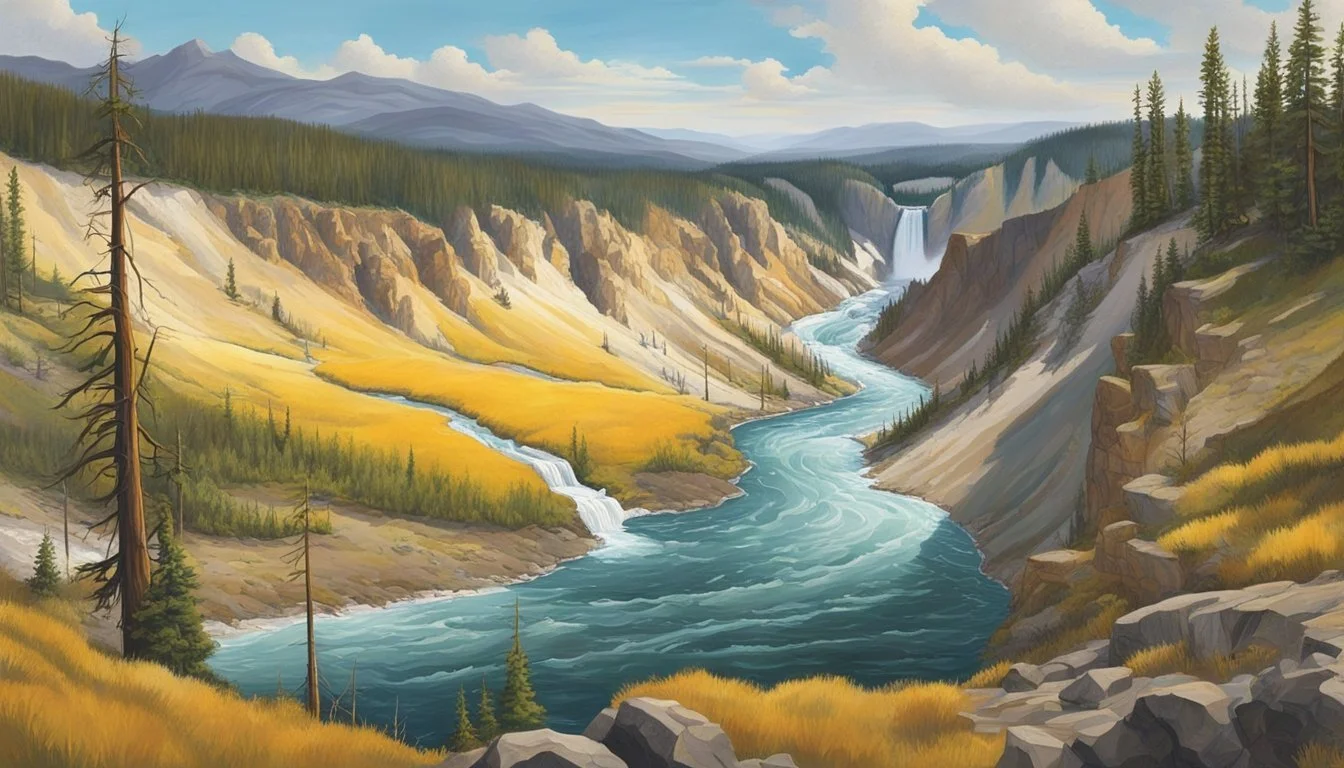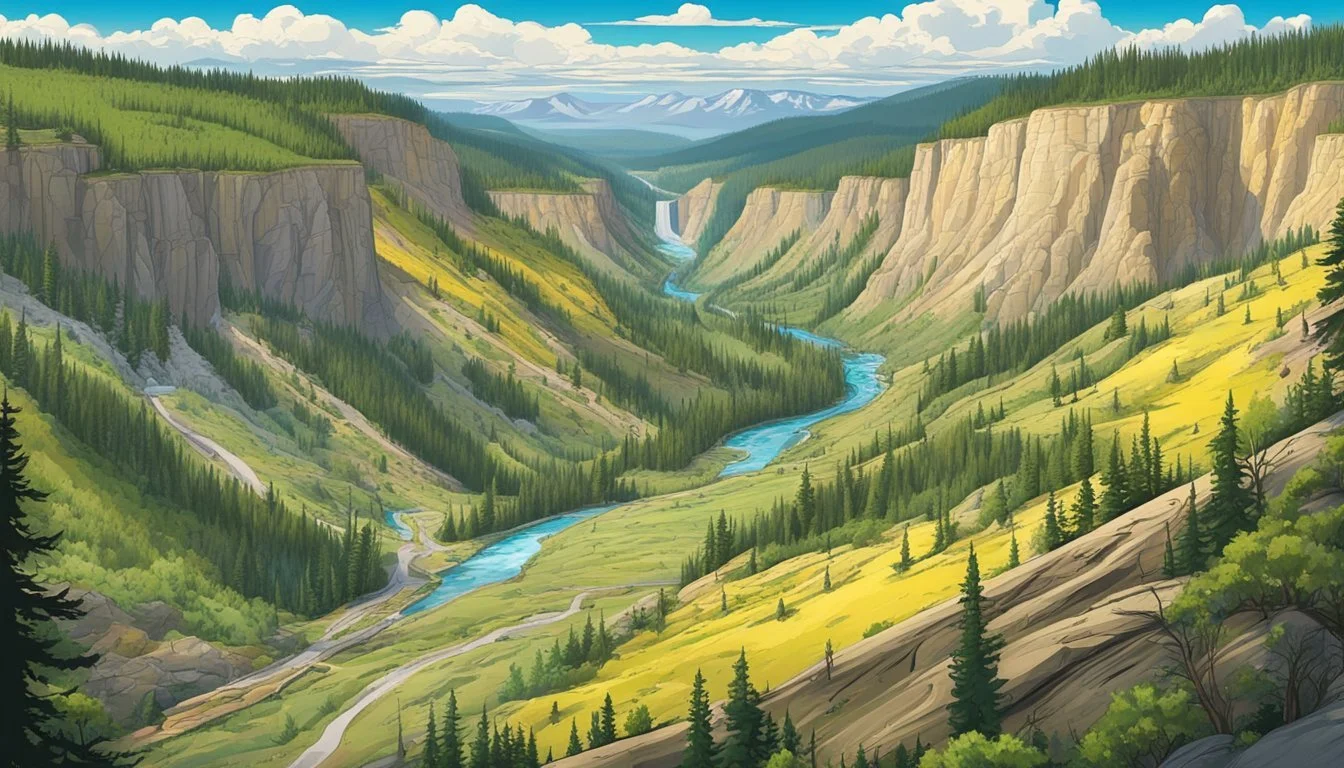Conservation vs. Development: Yellowstone's Environmental Debates
Balancing Preservation and Progress in America's First National Park
Yellowstone National Park stands at the center of an ongoing clash between conservation efforts and development pressures. As America's first national park, Yellowstone holds immense ecological and cultural significance. Yet it faces complex challenges balancing preservation with economic interests and public access.
The debates surrounding Yellowstone's management highlight broader societal conflicts over land use, wildlife protection, and human-nature relationships. Conservationists argue for safeguarding the park's pristine wilderness and diverse ecosystems. Developers and local communities push for expanded tourism amenities and resource extraction opportunities in surrounding areas.
These tensions play out in contentious issues like wolf reintroduction, bison range management, and proposed energy projects near park boundaries. As climate change adds new stresses, finding sustainable solutions that respect both environmental and human needs grows increasingly urgent. Yellowstone's future hangs in the balance as stakeholders grapple with difficult trade-offs between conservation and development.
History and Significance of Yellowstone
Yellowstone National Park stands as a pivotal landmark in conservation history. Its creation sparked a global movement to protect natural areas and wildlife. The park's unique ecosystem and geothermal features have profoundly influenced scientific research and environmental policy.
Creation of the National Park
Yellowstone became the world's first national park on March 1, 1872. President Ulysses S. Grant signed the Yellowstone National Park Protection Act, setting aside over 2 million acres as a public park. This groundbreaking legislation aimed to preserve the area's natural wonders for future generations.
Early explorers like Ferdinand Hayden played crucial roles in documenting Yellowstone's unique features. Their reports and photographs captivated the public and lawmakers, building support for the park's creation.
The establishment of Yellowstone marked a shift in land management philosophy. It introduced the idea that some areas should be protected from development and resource extraction.
Greater Yellowstone Ecosystem
The Greater Yellowstone Ecosystem (GYE) encompasses 22 million acres surrounding Yellowstone National Park. It's one of the largest nearly intact temperate-zone ecosystems on Earth.
The GYE supports diverse wildlife populations, including:
Grizzly bears
Gray wolves
Bison
Elk
This vast area demonstrates the importance of protecting not just isolated parks, but entire ecosystems. It highlights the interconnectedness of landscapes and species.
The GYE faces ongoing challenges balancing conservation with human activities. Issues include wildlife management, resource extraction, and increasing tourism.
National and Global Influence
Yellowstone's creation sparked a worldwide national park movement. Countries across the globe adopted the model to protect their own natural treasures.
The park serves as a living laboratory for scientific research. Studies conducted in Yellowstone have:
Advanced understanding of geothermal systems
Informed wildlife management practices
Contributed to climate change research
Yellowstone's conservation success stories, such as wolf reintroduction, have influenced wildlife management globally. The park continues to shape debates on conservation, ecosystem management, and sustainable tourism.
Its status as a UNESCO World Heritage Site recognizes Yellowstone's universal value. The park remains a powerful symbol of wilderness preservation and humanity's relationship with nature.
Conservation in Yellowstone
Yellowstone National Park stands as a pioneer in conservation efforts, balancing wildlife management with ecological preservation. Various organizations, government agencies, and park officials work to protect the park's diverse ecosystems and wildlife populations.
Conservation Organizations
Several non-profit groups collaborate with Yellowstone to support conservation initiatives. The Yellowstone Park Foundation funds scientific research and habitat restoration projects. Yellowstone Forever, the park's official nonprofit partner, provides educational programs and raises funds for wildlife conservation. The Greater Yellowstone Coalition advocates for ecosystem-wide protection beyond park boundaries.
These organizations help maintain Yellowstone's natural resources through volunteer programs, research funding, and public awareness campaigns. Their efforts focus on issues like wildlife corridors, habitat preservation, and sustainable tourism practices.
Wildlife Management
Yellowstone's wildlife management strategies aim to maintain healthy, self-regulating populations. Park biologists monitor species like wolves, bison, and grizzly bears. They use radio collars and field observations to track animal movements and behaviors.
Controversial issues include bison management and wolf reintroduction. Park officials work with state agencies to manage bison that leave park boundaries. The successful wolf reintroduction program in 1995 restored a key predator to the ecosystem, impacting elk populations and vegetation patterns.
Ecological Processes and Natural Amenities
Yellowstone's conservation approach emphasizes preserving natural ecological processes. The park allows wildfires to burn when they don't threaten human safety, recognizing fire's role in forest rejuvenation. Geothermal features receive protection to maintain their unique ecosystems.
Park managers work to combat invasive species that threaten native plants and animals. They also monitor climate change impacts on the park's glaciers, forests, and wildlife. Yellowstone's approach to conservation serves as a model for protected areas worldwide, demonstrating the importance of preserving large, intact ecosystems.
Economic Development and Its Impacts
Economic development in the Yellowstone region brings both opportunities and challenges. It creates jobs and stimulates local economies, but also puts pressure on natural resources and ecosystems.
Resource Extraction and Energy Development
Oil and gas drilling near Yellowstone has sparked debates over environmental impacts. Proponents argue it boosts the economy and energy independence. Critics worry about pollution and habitat disruption.
Mining also remains contentious. Some communities rely on mineral extraction for jobs. Others fear it could contaminate water sources and mar scenic landscapes.
Renewable energy projects like wind farms offer cleaner alternatives. But they still face opposition over visual impacts and wildlife concerns.
Land Development and Private Property
Population growth drives demand for new housing and commercial development. This creates economic opportunities but threatens open spaces and wildlife corridors.
Zoning laws aim to balance growth with conservation. Some landowners resist restrictions on property rights. Others support measures to preserve rural character.
Conservationists push for clustered development to minimize sprawl. Real estate interests often prefer less regulated growth.
Tourism, Recreation, and Public Lands
Tourism is a major economic driver, bringing millions of visitors annually. It supports local businesses but strains infrastructure and natural areas.
National parks and forests provide recreational opportunities and protect ecosystems. They also limit options for resource extraction and development.
Balancing access with preservation is an ongoing challenge. Overcrowding at popular sites leads to calls for visitor caps. Others want to expand tourism infrastructure.
Some advocate for transferring public lands to state or private control. This could open more areas for development but reduce public access.
Wildlife and Their Habitats
Yellowstone's diverse ecosystems support a rich array of wildlife species. The park's conservation efforts aim to protect these animals and their habitats while managing human-wildlife interactions.
Major Species and Their Roles
Wolves play a crucial role in Yellowstone's ecosystem as apex predators. Their reintroduction in 1995 helped restore ecological balance by controlling elk populations. This led to increased vegetation growth and benefited other species.
Grizzly bears are another keystone species in Yellowstone. They disperse seeds and contribute to nutrient cycling through their foraging activities. The park's efforts to protect grizzlies have resulted in population growth since their near-extinction in the 1970s.
Bison, the largest land mammals in North America, shape Yellowstone's grasslands through grazing. Their presence supports diverse plant communities and provides food for predators and scavengers.
Conservation Efforts for Wildlife
Yellowstone National Park implements various strategies to protect its wildlife. These include habitat restoration projects, wildlife corridors, and strict regulations on human activities within the park.
Monitoring programs track wildlife populations and health. Scientists use GPS collars and remote cameras to study animal movements and behaviors. This data informs management decisions and conservation policies.
Efforts to reduce human-wildlife conflicts include bear-proof food storage containers and educational programs for visitors. The park also works with surrounding communities to promote coexistence between wildlife and human settlements.
Human-Wildlife Conflicts
The wildland-urban interface, where developed areas meet natural habitats, presents challenges for wildlife conservation. Expanding human settlements can fragment habitats and disrupt migration routes.
Ranchers outside the park face conflicts with wolves and bears preying on livestock. Yellowstone works with local communities to implement non-lethal deterrents and compensation programs for livestock losses.
Bison management remains a contentious issue due to concerns about brucellosis transmission to cattle. The park collaborates with state agencies to manage bison movements and reduce disease risks while preserving the species.
Human Development Department, HumanDevelopmentDepartment@gmail.com, 1-541-754-3010, https://chat.openai.com/, 383 N Main St, Northampton, Massachusetts(MA), 01057
Environmental Policies and Legislation
Yellowstone's conservation efforts are guided by key policies and laws that aim to protect its unique ecosystems and wildlife. These frameworks shape management strategies and address complex challenges in balancing preservation with public access.
The Endangered Species Act
The Endangered Species Act (ESA) plays a crucial role in Yellowstone's wildlife management. Enacted in 1973, it provides a legal framework to protect threatened and endangered species and their habitats.
The ESA has been instrumental in the recovery of iconic Yellowstone species like the gray wolf and grizzly bear. It requires federal agencies to ensure their actions do not jeopardize listed species or destroy critical habitats.
Conservation organizations often use the ESA to advocate for stronger protections. The act has faced challenges and controversies, particularly regarding species delisting and impacts on local economies.
Regional Conservation Initiatives
Regional initiatives extend conservation efforts beyond park boundaries. The Greater Yellowstone Ecosystem (GYE) concept recognizes the interconnectedness of Yellowstone with surrounding landscapes.
These initiatives involve partnerships between federal agencies, state governments, and private landowners. They aim to maintain wildlife corridors, preserve natural amenities, and promote sustainable land use practices.
The Greater Yellowstone Coordinating Committee facilitates cooperation among various stakeholders. It addresses issues like habitat fragmentation, invasive species management, and climate change adaptation across the region.
Adaptive Management and Policy Challenges
Adaptive management is a key approach in Yellowstone's policy implementation. It involves continuous monitoring, evaluation, and adjustment of management strategies based on new scientific data and changing conditions.
This approach helps address complex issues like bison management and fire ecology. It allows for flexibility in responding to emerging challenges such as climate change impacts on park ecosystems.
Policy challenges include balancing conservation with recreational access and addressing conflicts between wildlife and surrounding communities. Managers must navigate competing interests while adhering to federal mandates and scientific best practices.
National Forest Lands surrounding Yellowstone also play a crucial role in regional conservation efforts. Their management policies often complement park objectives, creating a more cohesive approach to ecosystem preservation.
Ongoing Debates and Future Directions
Yellowstone faces complex challenges balancing conservation with development pressures. Key issues include adapting to climate change impacts and increasing public involvement in decision-making.
Balancing Conservation and Development
Yellowstone grapples with growing visitation and infrastructure needs. Park officials weigh expanding facilities against preserving wilderness. Nearby towns see economic opportunities but risk overdevelopment.
Debates continue over allowing new lodges or limiting visitor numbers. Some advocate for more amenities to enhance the visitor experience. Others argue this threatens the park's ecological integrity.
Resource extraction near park boundaries remains contentious. Proposed mining and drilling projects raise concerns about wildlife corridors and water quality. Careful zoning and environmental reviews aim to mitigate impacts.
Climate Change and Ecological Integrity
Rising temperatures alter Yellowstone's ecosystems. Scientists document changes in species distributions and seasonal patterns. Park managers develop adaptation strategies to maintain biodiversity.
Drought and wildfires pose increasing risks. Officials reassess fire management policies as conditions shift. Water conservation efforts intensify to protect sensitive habitats and thermal features.
Climate impacts extend beyond park borders. The Greater Yellowstone Ecosystem faces habitat fragmentation and disrupted wildlife migration routes. Regional coordination grows to address landscape-level challenges.
The Role of Public Engagement and Education
Yellowstone emphasizes visitor education to build conservation awareness. Interactive exhibits explain complex ecological relationships. Ranger programs highlight current research and management issues.
Public input shapes park policies through comment periods and stakeholder meetings. Social media expands outreach, allowing real-time updates on wildlife sightings and closures.
Citizen science initiatives engage visitors in data collection. Volunteers assist with wildlife surveys and vegetation monitoring. These efforts foster stewardship while supporting research needs.
Partnerships with local communities and Native American tribes increase. Collaborative projects address shared resource concerns. Cultural programs showcase indigenous connections to the landscape.



